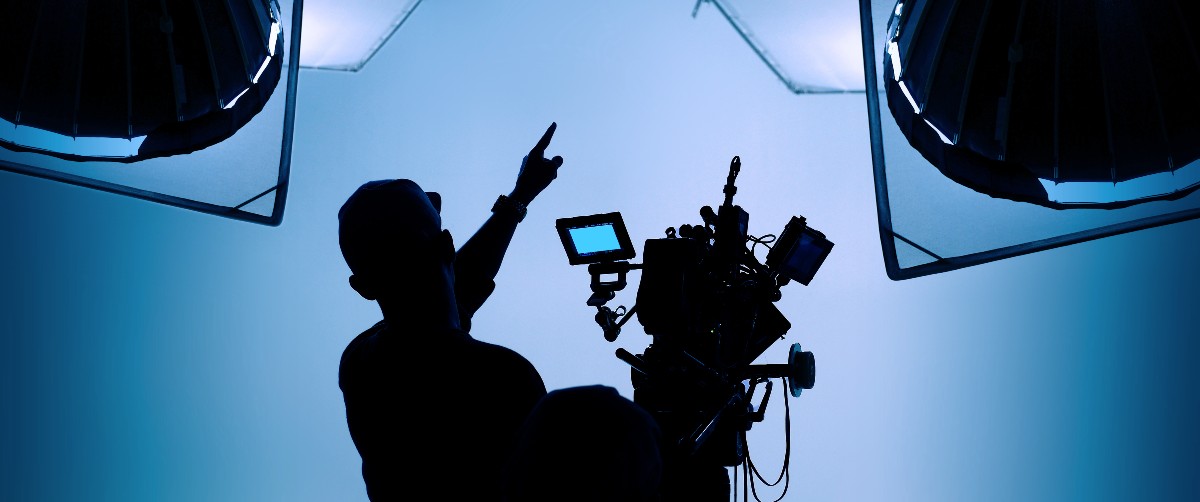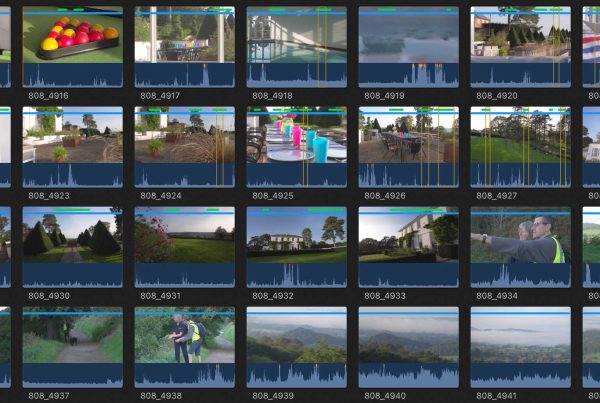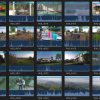How can I get best value for my video budget?
Now this is where things start to get interesting. Think qualitative, not quantitative.
To generate maximum impact for your budget, you can think about your project in two ways – maximising efficiency and maximising impact.
Maximising efficiency
On a shoot day, you want to be paying for a recording camera, not one sitting in a case being moved from A to B. So think about maximising the shooting day from start to finish.
There are plenty of factors that affect efficiency – ensuring that presenters are prepared properly, whether using autocue or for interview, booking a quiet space for presenters is essential to avoid countless retakes. Are all filming locations clean and tidy? Do they conform to your health and safety regulations? Is a risk assessment required on site before filming? Are there blinds in the room to control a harsh winter light?
Are all the interviews carried out in four corners of the same room in a two-hour session, or is the crew spending the whole day rigging and de-rigging before moving off to yet another location for another interview? All that time spent plugging in and unplugging could be better spent getting valuable B roll footage to accompany your interviews.
Has parking been arranged for the crew vehicles? Oh, and don’t forget to build in a lunch break too – a well fed crew is a happy crew, and a happy crew is a productive crew.
Some time ago, we were filming a promotional film for a multinational at their operation in Rome. We were shooting in a chemical plant and to ensure every shot was compliant with regulations, we had the client’s head of health & safety with us to oversee every shot, along with their European head of communications for good measure.
All sorted then? No. Upon submitting the initial edit to the US head office, not one scene from Rome was acceptable. Despite rigorous procedures on site, involving all the right people, operators at the plant proved to be incorrectly kitted out for their tasks and many were not complying with approved procedures at their workstations.
The client admitted full responsibility for these errors, and we were faced with either a complete reshoot or fixing these errors with digital correction in post-production. Neither solution was going to be cheap, and in the end the client opted to go with a post-production fix. With the problem solved in post, the client was happy, and the film turned out to be a great success, but the lack of attention at the time of filming led to unnecessary cost in post and a few red faces at a high level within the company.
Even on smaller shoots it is tempting to rely on digital touching to mask out or blur problems in the edit. ‘We’ll fix it in post ’is not something you want to hear too often. A few minutes of attentiveness at the time of shooting can save time and budget and is far preferable to fixing problems in the edit suite.
A lot of this of course is common sense, but with care, you can ensure that you don’t waste time or money at the time of filming and have a contented, motivated crew operating at peak efficiency, to deliver best quality and quantity of footage throughout the day.
Prepping presenters beforehand is essential too. If using autocue, all well and good but make sure the script is supplied at least 24 hours in advance so that your crew can arrive with the script loaded and ready to go. If you are using a prompted interview technique to deliver you information, be sure that your interviewees are clear what needs to be communicated.
Most information for most interviews can actually be summarised in under two minutes. So let your presenters know your expectations. Most audiences won’t take away more than a handful of messages from any video. So agree with your presenters the key messages to be conveyed ahead of time. This will prevent lengthy, super-saturated interviews which will burn through your filming day and inevitably slow down the edit too.
Great – so you now are in a position to maximise efficiency throughout the project.
Now you can be thinking about perhaps the most important point of all – Maximising Impact.
Maximising impact
So, you think you’re in the clear – you’ve successfully controlled your costs and made the most of your budget throughout the duration of the project.
But what if the final video fails to make impact with your audience?
Perhaps the tone is wrong for the viewing occasion, the messaging is over complex or too long, or maybe the film just doesn’t sit right with your brand values.
This can be a big problem, because you only find this out right at the end, after you have spent 95% of your budget.
Maximising impact means making the right decisions right at the start.
It means working with the right script, the right storyboard, the right director, selecting the right presenters, actors, voiceover artist, soundtrack and much more. These are creative decisions, and your production company should be advising you all the way in these early stages – providing you with options and updating you with clear budget breakdowns.
So, it actually goes further back, to working with the right people from the start. That means selecting the right production company, and I don’t mean the cheapest company, nor the most local, the youngest, nor the most experienced.
I mean the right production company for you and your brand and your specific video requirement. One that will take time to invest in understanding your brand values, your market, your audience and more specifically, your task in hand.
You will know when you’ve met the right team. You just get on with them. You trust them to deliver, and together, you have a relationship built upon mutual understanding and respect. This can’t be measured by facts or figures. It’s purely qualitative and it will feel right.
From this firm foundation, you can create videos that sit comfortably alongside all your other communications, both internal and external. You will probably have a professional relationship that will be highly productive for a number of years. You will be able to develop your video campaigns over time and consistently engage, influence and inspire your audience in a meaningful way over the course of many productions.
This is how you maximise impact and build your brand communications.
This is how you create real value for your band.
And ironically, when you create real value for your brand, the cost which we were examining at the start of this series of blog posts suddenly starts to look less of an important question.


















